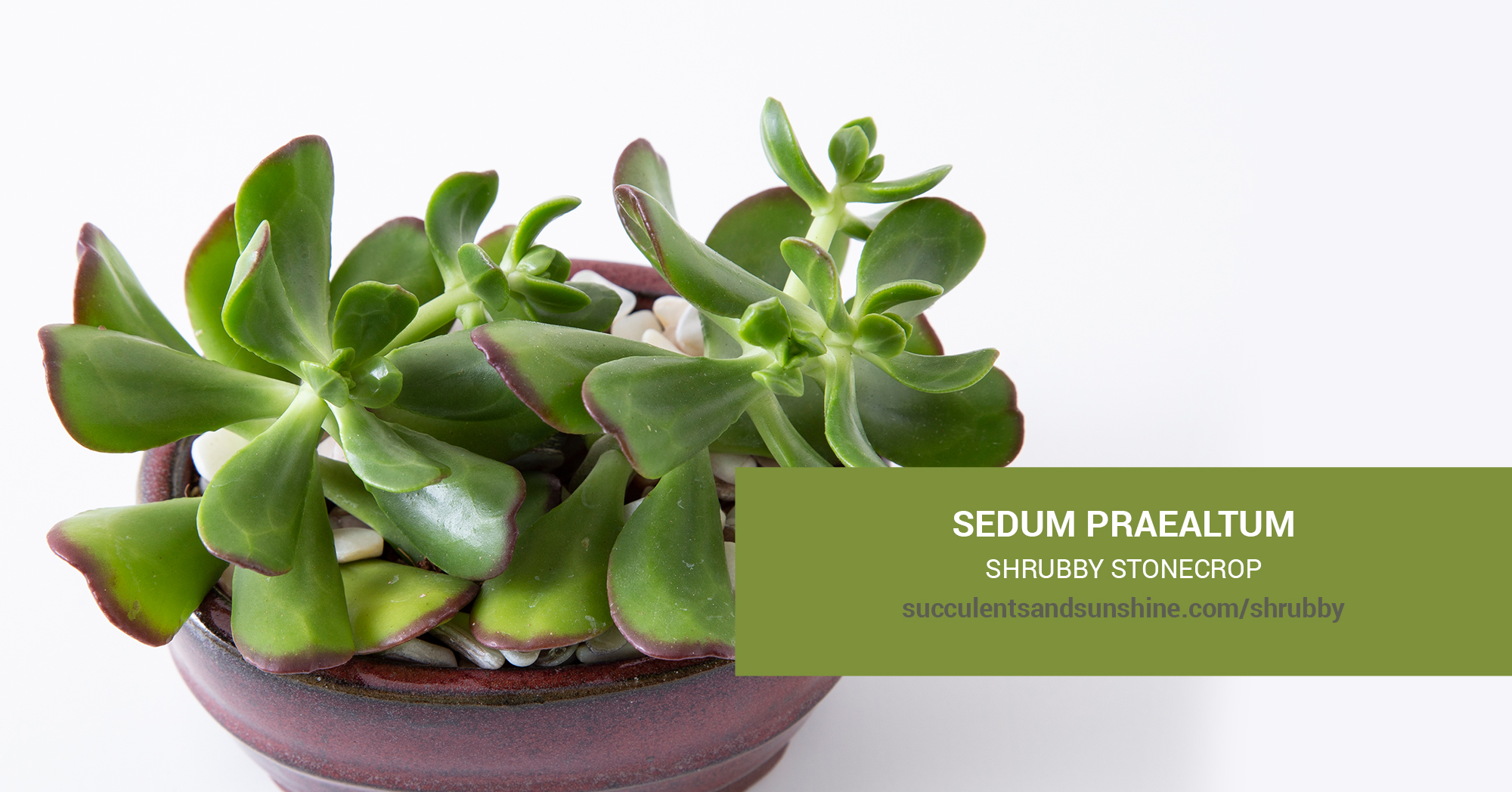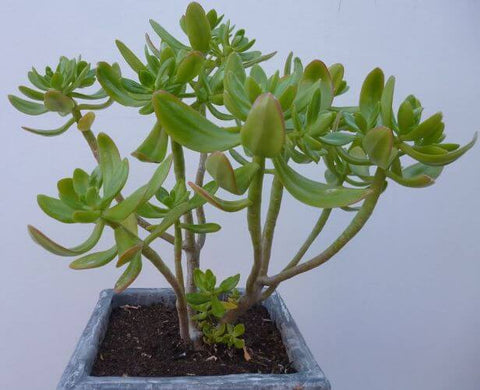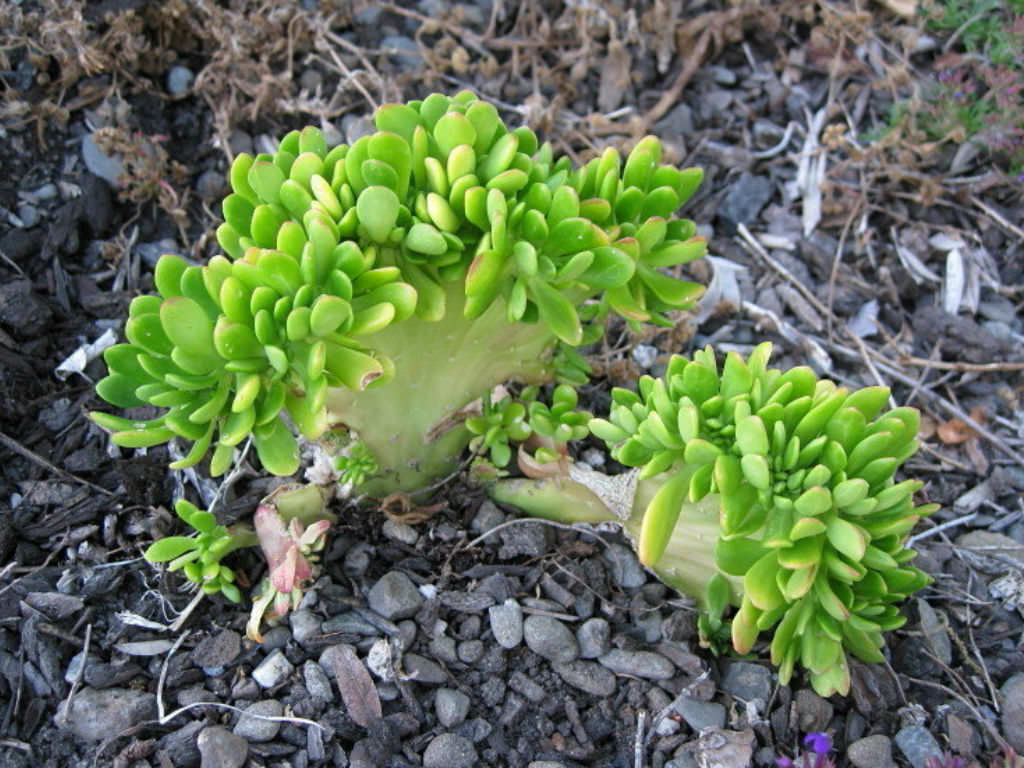This shrub-like succulent has leaves resembling Crassula ovata that are green in color. It can reach a considerable height and its branches spread out for a few feet when mature. During the early spring months, it produces bright yellow star-shaped blooms.
Table of Contents
Care and Propagation Information
Sedum praealtum “Shrubby Stonecrop” can be an attractive addition to gardens or homes, as it can grow both tall and wide, with intertwining stems and leaves that may turn red in bright sunlight. This adaptable succulent is ideal for those looking to add height and texture to their gardens or interiors.
Watering
The optimal way to care for Sedum praealtum “Shrubby Stonecrop” is to use the “soak and dry” technique, meaning that the soil should be allowed to dry out completely between waterings. This is the typical watering requirement for a succulent.
Where to Plant
If you live in a location where temperatures drop below 20° F (-6.7° C), it is best to place Shrubby Stonecrop in a pot so it can be brought inside when temperatures drop. This succulent will do best in an area of full to partial sunlight.
How to Propagate Sedum praealtum “Shrubby Stonecrop”
The Shrubby Stonecrop, Sedum praealtum, can be propagated through stem cuttings.
Cuttings
To propagate “Shrubby Stonecrop,” use a sterile, sharp knife or pair of scissors to cut off a stem from the mother plant. Let the stem sit for several days so that it can form a callous before planting it in soil that drains well. Water the soil whenever it is completely dry.
Commonly Mistaken For
Care and Propagation Information
General Care for Sedum praealtum “Shrubby Stonecrop”
Sedum praealtum “Shrubby Stonecrop” can be an attractive addition to gardens or homes, as it can grow both tall and wide, with intertwining stems and leaves that may turn red in bright sunlight. This adaptable succulent is ideal for those looking to add height and texture to their gardens or interiors.
Watering
The optimal way to care for Sedum praealtum “Shrubby Stonecrop” is to use the “soak and dry” technique, meaning that the soil should be allowed to dry out completely between waterings. This is the typical watering requirement for a succulent.
Where to Plant
If you live in a location where temperatures drop below 20° F (-6.7° C), it is best to place Shrubby Stonecrop in a pot so it can be brought inside when temperatures drop. This succulent will do best in an area of full to partial sunlight.
How to Propagate Sedum praealtum “Shrubby Stonecrop”
The Shrubby Stonecrop, Sedum praealtum, can be propagated through stem cuttings.
Cuttings
To propagate “Shrubby Stonecrop,” use a sterile, sharp knife or pair of scissors to cut off a stem from the mother plant. Let the stem sit for several days so that it can form a callous before planting it in soil that drains well. Water the soil whenever it is completely dry.
Commonly Mistaken For
The common name “Bush Sedum” is sometimes used interchangeably with “Shrubby Sedum”, although the former grows taller than the latter. Additionally, the leaves of Sedum dendroideum are shorter in comparison.
FAQ
Where is the best place to plant Sedum?
Reduce the amount of direct sunlight the plant gets.
What is the difference between sedum and stonecrop?
Sedum, often referred to as stonecrop due to its stony appearance, is found in 600 species in the Northern Hemisphere. Ranging from annuals and perennials to creeping herbs and shrubs, Appalachian stonecrop has white flowers.
Do sedum plants spread?
Tall sedums make an attractive, resilient ground cover in large plantings, and they can be used to dress up a hillside or to add texture to a perennial border. Creeping sedums spread slowly but steadily, providing a low-growing cover for sunny spots.
How quickly does sedum spread?
Does stonecrop Sedum spread?
Sedum divergens, commonly referred to as cascade stonecrop or spreading stonecrop, is a perennial plant which produces yellow blossoms in the middle of summer. Its leaves are green, however they can exhibit a reddish hue when exposed to direct sunlight. These plants can grow up to several feet in an irregular manner from the base.



